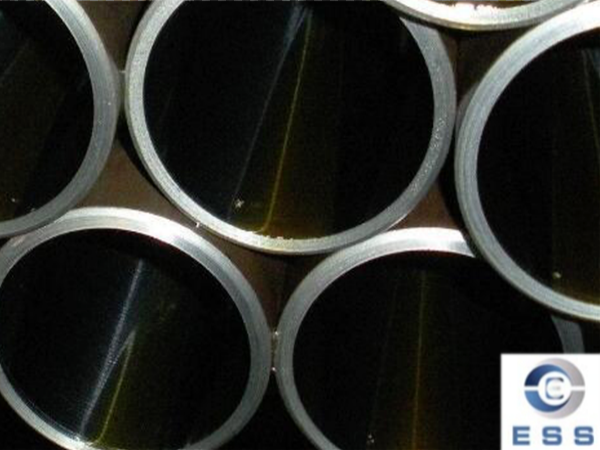Overall effectiveness of Electric resistance welded tubes as a product
Electric resistance welded tube is widely used in industries such as oil and gas, construction and water supply. ERW steel pipe is manufactured through a resistance welding process that involves passing an electric current through a metal strip to create a weld between the two pieces of metal. The use of ERW steel pipe has increased in recent years due to its many advantages such as cost-effectiveness, ease of use and availability. However, like any other product, ERW steel pipe has its drawbacks. In this article, we will explore the advantages and disadvantages of ERW steel pipe and examine its overall effectiveness as a product.

Advantages of ERW steel pipes:
1. Cost-effectiveness
One of the most significant advantages of ERW steel pipe is its cost-effectiveness. ERW steel pipes are cheaper than seamless pipes, which require a more complex production process. ERW steel pipe is also more cost-effective than welded pipe made using other methods. The lower production costs of ERW steel pipe make it an attractive option for industries looking to reduce costs.
2. Availability
ERW steel pipe is readily available, making it an attractive option for industries that require a continuous supply of pipe. ERW steel pipes are produced in large quantities so they are widely available from many manufacturers. The availability of ERW steel pipes reduces the risk of production delays and ensures a stable supply to industries that rely on steel pipes.
3. Easy to use
ERW steel pipe is easy to use, making it a popular choice for industries that require fast and efficient installation. ERW steel pipe can be easily cut and welded together, reducing the need for specialized tools and equipment. ERW steel pipe also comes in a variety of lengths and diameters, making it suitable for a wide range of applications.
4. Strength and durability
ERW steel pipe is strong and durable and suitable for a variety of applications. ERW steel pipe is made from high-quality steel and is designed to withstand the rigors of use in harsh environments. ERW steel pipe is also resistant to corrosion, making it a reliable choice for industries that require corrosion-resistant pipe.
5. Versatility
ERW pipe is versatile and suitable for a variety of industries. ERW pipes are used in the construction industry to build buildings and bridges, in the oil and gas industry to transport oil and gas, and in the water supply industry to transport water.
Disadvantages of ERW steel pipe:
1. Welding defects
One of the disadvantages of ERW steel pipe is the potential for welding defects. The welding process used to make ERW steel pipe can create defects such as porosity, lack of fusion, and cracks. These defects reduce the strength and durability of the pipe and can lead to leaks and failures.
2. Limited size range
ERW pipes are available in a limited range of sizes, which can be a disadvantage in some industries. ERW steel pipe is typically smaller in diameter than seamless steel pipe, which may limit its use in industries that require larger pipes.
3. Quality control issues
Another disadvantage of ERW steel pipe is potential quality control issues. ERW pipe is produced in large quantities and it can be challenging to ensure that each pipe meets the required quality standards. Quality control issues can lead to defects in pipes, reducing their strength and durability and increasing the risk of failure.
4. Easy to corrode
Although ERW steel pipe is corrosion-resistant, it is still susceptible to corrosion in certain environments. ERW steel pipe exposed to corrosive materials or environments may corrode over time, reducing its strength and durability and increasing the risk of failure.
5. Reduce load capacity
ERW steel pipes have lower load-carrying capacity compared to seamless pipes. The welding process used in ERW steel pipe creates a weld along the length of the pipe, which can be a weak link. Such welds reduce the load-bearing capacity of the pipe compared to seamless pipes, which have a continuous structure without any welds. In applications involving high pressure or heavy loads, seamless pipe may be a more suitable choice.
Conclusion:
ERW steel pipe offers several advantages, including cost-effectiveness, ease of use, availability, strength, durability and versatility. These advantages make ERW steel pipe a popular choice in various industries. However, disadvantages associated with ERW pipes such as welding defects, quality control issues, limited size range, susceptibility to corrosion, and reduced load-carrying capacity must be considered.
To mitigate these shortcomings, appropriate quality control measures should be implemented during the manufacturing process of ERW steel pipes. Regular inspections and testing can help identify and resolve welding defects and ensure that pipes meet required quality standards. Additionally, proper maintenance and corrosion protection can extend the service life of ERW steel pipe in corrosive environments.
In summary, while ERW steel pipe has its drawbacks, its advantages and overall effectiveness make it a viable option for many applications. When choosing the type of pipe to use, it is critical to consider the specific requirements and conditions of each project. Proper installation, maintenance and quality control practices can maximize the advantages and minimize potential disadvantages of ERW steel pipe, resulting in successful, efficient piping systems in a variety of industries.













 Eastern Steel Manufacturing Co.,Ltd not only improve product production and sales services, but also provide additional value-added services. As long as you need, we can complete your specific needs together.
Eastern Steel Manufacturing Co.,Ltd not only improve product production and sales services, but also provide additional value-added services. As long as you need, we can complete your specific needs together.










